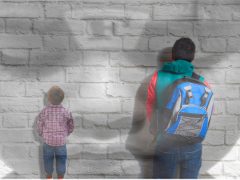Reading Instruction! (Note: This article was published in the April 2018 print and online versions of Language Magazine) More accurately stated, the number one cause of low literacy in America is the archaic mental models that constrain the ways we conceive of, design, and deliver reading instruction. Over half of all the K-12 students in […]
Archive | Magic Ladder
Adult Literacy Tech: Overcoming Self-Sabotaging Habits
According to NAAL data, reading proficiency remains a significant bottleneck to social and economic progress for tens of millions of U.S. adults. Adults struggling with literacy (in their native language) are not only struggling with the inherent difficulties involved in literacy learning, they are struggling with what they learned in the past that is sabotaging […]
Share this:
- Click to share on Facebook (Opens in new window) Facebook
- Click to share on X (Opens in new window) X
- Click to share on LinkedIn (Opens in new window) LinkedIn
- Click to share on Pinterest (Opens in new window) Pinterest
- Click to share on Pocket (Opens in new window) Pocket
- Click to share on Reddit (Opens in new window) Reddit
- Click to share on Telegram (Opens in new window) Telegram
- Click to share on Tumblr (Opens in new window) Tumblr
- Click to share on WhatsApp (Opens in new window) WhatsApp
- Click to email a link to a friend (Opens in new window) Email
- Click to print (Opens in new window) Print
NO MORE INSTRUCTIONAL CONFUSION, GUESSING, OR MIND-SHAME!
NO MORE INSTRUCTIONAL CONFUSION, GUESSING, OR MIND-SHAME! Learning to Read is 1-2-3 (and free!): 1) Click on any word. 2) Try to read word in Pop-up. Can’t? Click word in Pop-up. 3) Repeat Step 2 as needed. Click on any word below and follow the steps: 1,2,3. to ice eye have know meow wolf pour fury idea heart acres […]
Share this:
- Click to share on Facebook (Opens in new window) Facebook
- Click to share on X (Opens in new window) X
- Click to share on LinkedIn (Opens in new window) LinkedIn
- Click to share on Pinterest (Opens in new window) Pinterest
- Click to share on Pocket (Opens in new window) Pocket
- Click to share on Reddit (Opens in new window) Reddit
- Click to share on Telegram (Opens in new window) Telegram
- Click to share on Tumblr (Opens in new window) Tumblr
- Click to share on WhatsApp (Opens in new window) WhatsApp
- Click to email a link to a friend (Opens in new window) Email
- Click to print (Opens in new window) Print

Early Learning Trajectories: The Obstacle Course Wall
Note: See Demo at bottom of page Convergence Point 1 – Decades of social and economic research, beginning with the Coleman Report and since including Heckman, (Nobel Prize winner) Rolnick (Ex. V.P. of the FED), Hanushek (Hoover Institute) and many others, and decades of developmental neuroscience research, most notably as compiled by Harvard’s Jack Shonkoff, have converged and coalesced into […]
Share this:
- Click to share on Facebook (Opens in new window) Facebook
- Click to share on X (Opens in new window) X
- Click to share on LinkedIn (Opens in new window) LinkedIn
- Click to share on Pinterest (Opens in new window) Pinterest
- Click to share on Pocket (Opens in new window) Pocket
- Click to share on Reddit (Opens in new window) Reddit
- Click to share on Telegram (Opens in new window) Telegram
- Click to share on Tumblr (Opens in new window) Tumblr
- Click to share on WhatsApp (Opens in new window) WhatsApp
- Click to email a link to a friend (Opens in new window) Email
- Click to print (Opens in new window) Print

“The Magic Ladder”
The Magic Ladder is a system of tools (free to schools and families) that has the potential to fundamentally improve the learning trajectories of more than half of the children in the U.S.
Share this:
- Click to share on Facebook (Opens in new window) Facebook
- Click to share on X (Opens in new window) X
- Click to share on LinkedIn (Opens in new window) LinkedIn
- Click to share on Pinterest (Opens in new window) Pinterest
- Click to share on Pocket (Opens in new window) Pocket
- Click to share on Reddit (Opens in new window) Reddit
- Click to share on Telegram (Opens in new window) Telegram
- Click to share on Tumblr (Opens in new window) Tumblr
- Click to share on WhatsApp (Opens in new window) WhatsApp
- Click to email a link to a friend (Opens in new window) Email
- Click to print (Opens in new window) Print
